
Top AI 3D Model Generator: Tripo 3D vs. Hunyuan 3D
The emergence of AI has transformed the 3D modeling landscape, bringing speed, efficiency, and previously unimaginable creative possibilities. Among the leading tools in this space are Tripo 3D and Hunyuan 3D, both of which leverage cutting-edge AI to generate detailed models from text descriptions and images. While they share core functionalities, each platform has unique strengths that cater to different user needs. In this comparison, we take a closer look at their features, performance, and usability to help you decide which solution suits you best.
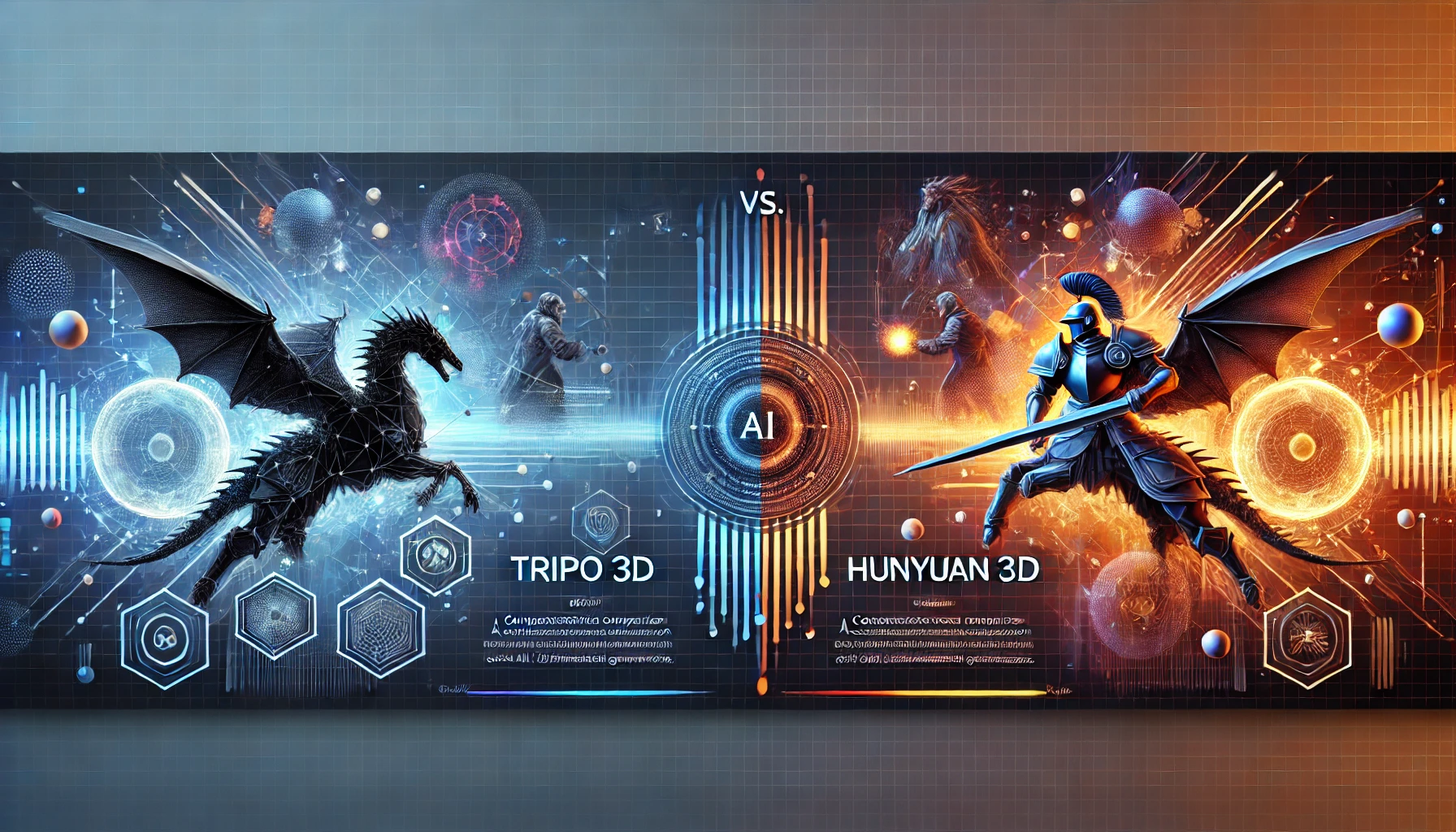
Feature Introduction
3D modeling has traditionally been a labor-intensive process, requiring specialized skills in complex software. Today, AI-powered platforms drastically reduce the learning curve, allowing both novices and professionals to generate high-fidelity 3D models with minimal effort.
- Tripo 3D: Focuses on robust text- and image-to-3D conversion features, boasting intuitive controls and high-quality results that appeal to a wide range of users.
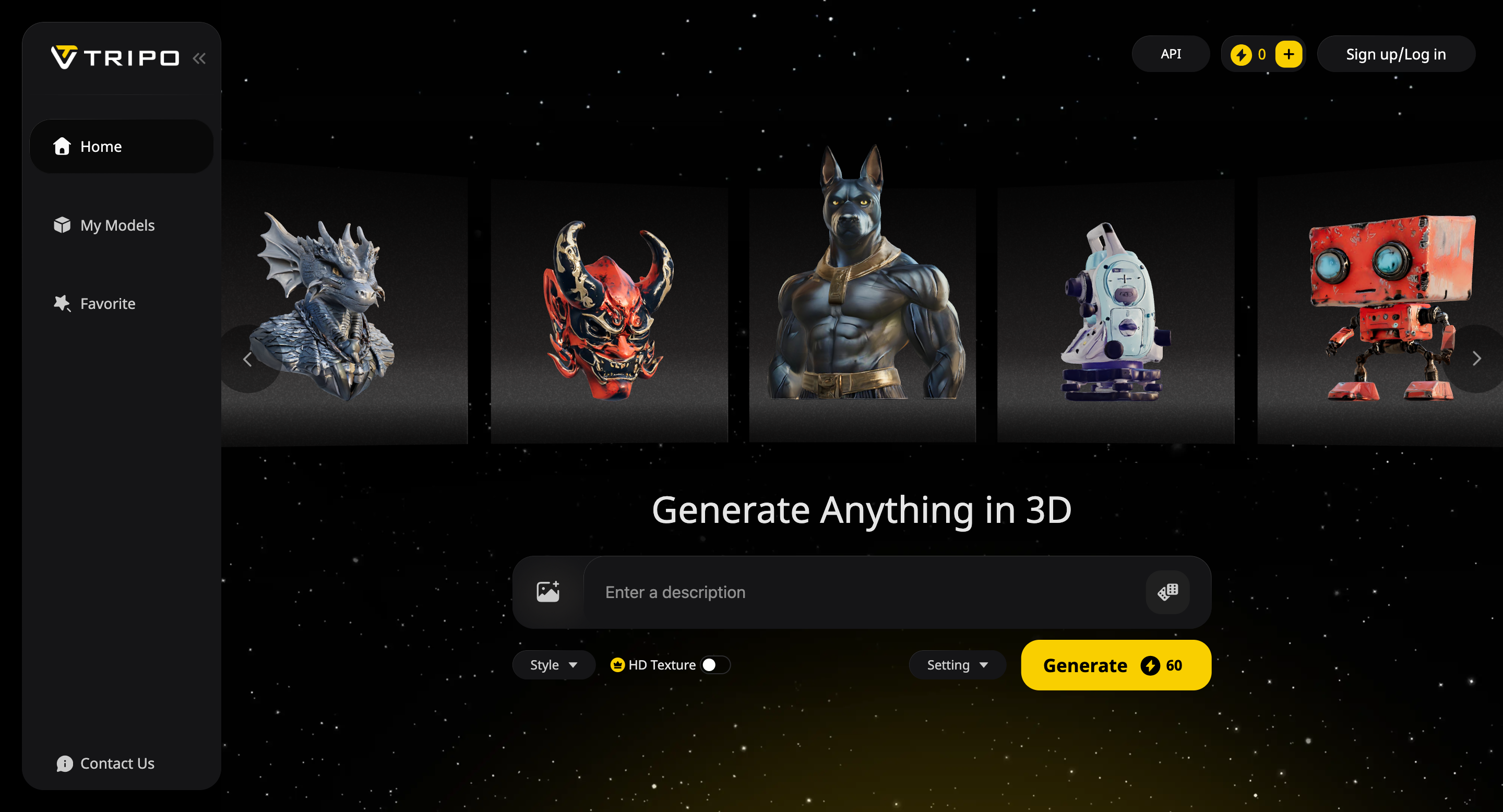
- Hunyuan 3D: Offers a breadth of AI-driven tools that support everything from low-poly character creation to full-fledged animation pipelines.
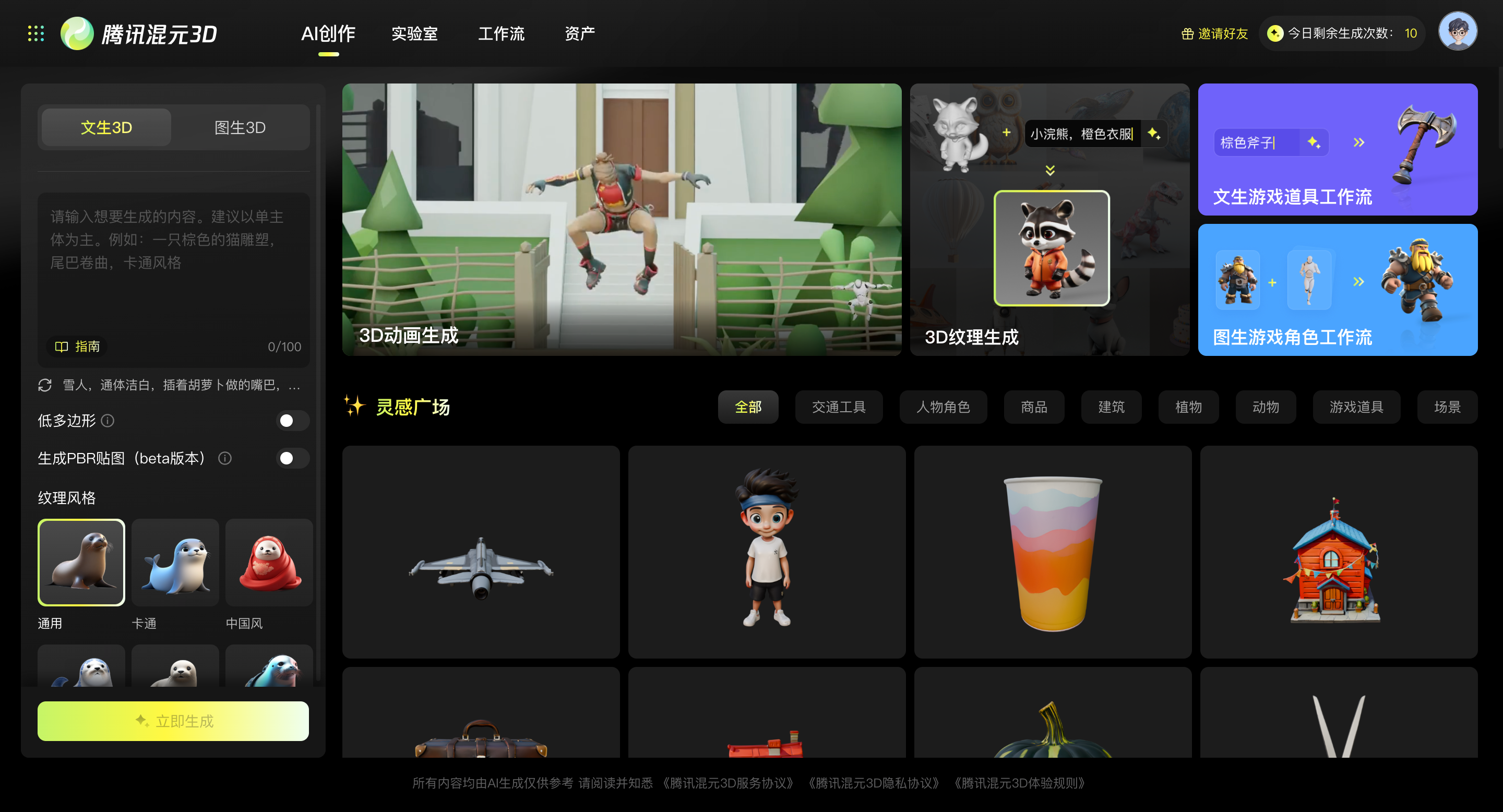
Feature Comparison
Text-to-3D Capabilities
Text-to-3D is a game-changer for rapid prototyping and conceptual visualization. Both platforms interpret descriptive text prompts to create preliminary 3D shapes that users can refine.
-
Hunyuan 3D
- Strengths: Simple prompts yield consistent models. Extensive presets allow for quick configuration, making it ideal for building a rough scene or conceptualizing ideas.
-
Tripo 3D
- Strengths: Robust parameter controls let you refine intricate features—ideal for users who want precise, nuanced detailing. It’s particularly helpful for creating stylized, imaginative models where text descriptors can be very specific.
Example Prompt
“A small fire dragon covered in delicate orange-red scales with faint flame-like textures, large, bright eyes full of curiosity, and a slender tail with sharp little spines.”
3D Results:
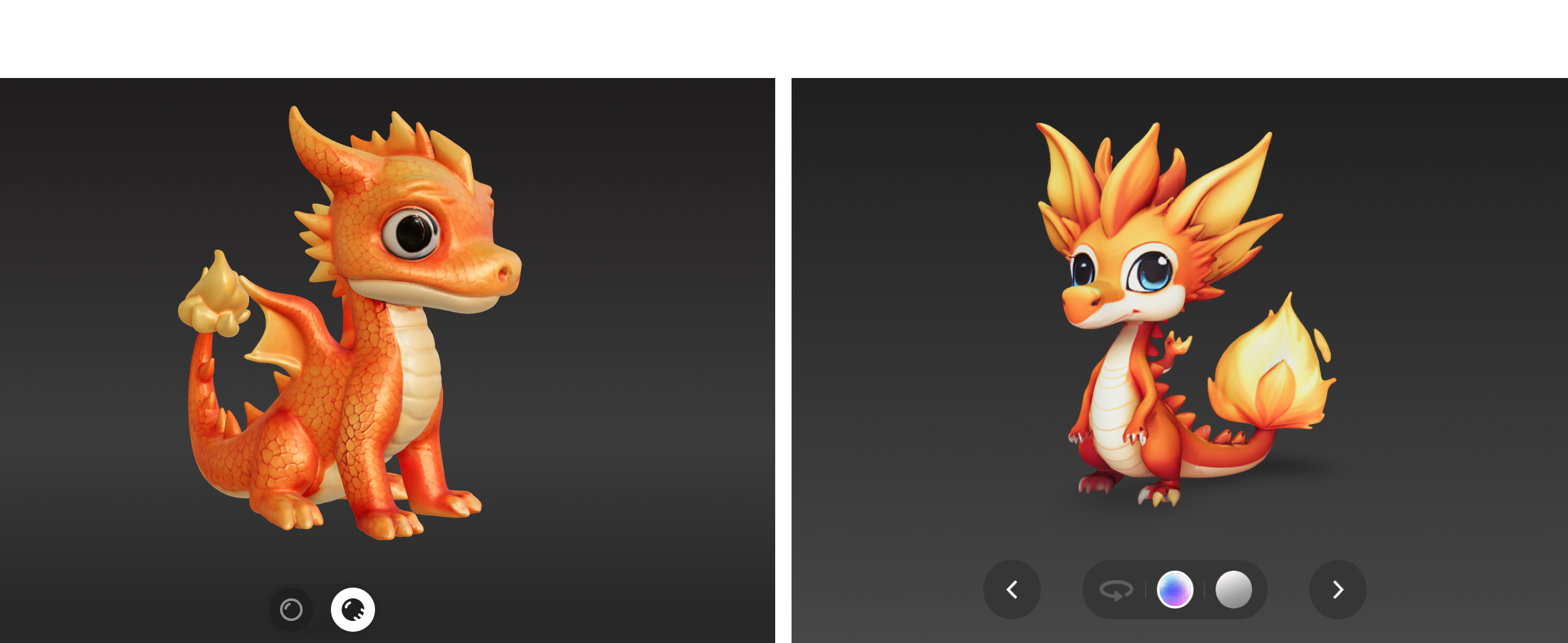
Image-to-3D Capabilities
Many designers rely on existing photographs or concept art, making image-to-3D conversion indispensable.
-
Hunyuan 3D
- Strengths: Generally faithful to the source image, reproducing overall shape and core attributes accurately. Texture mapping and proportions are well-handled, which is great for straightforward references like objects or basic characters.
-
Tripo 3D
- Strengths: Produces highly detailed meshes and more intricate texture work, capturing subtle lighting and shadow information. The result is often a premium, polished 3D asset.
Example Image:

3D Results:
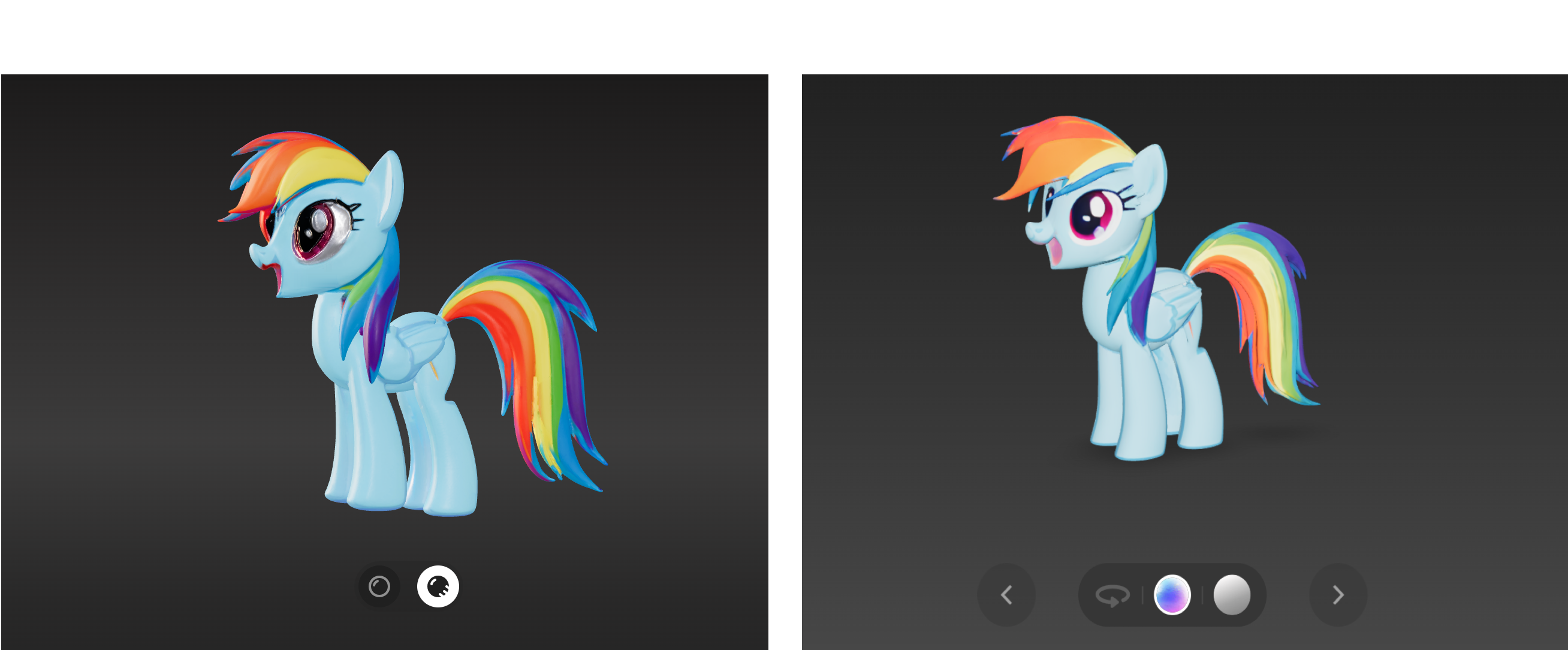
Performance and Workflow
Performance and workflow efficiency determine how quickly and smoothly you can produce 3D assets.
-
Hunyuan 3D
- Speed: Generally fast, especially for simpler models or when using presets. The platform’s node-based workflow is more complex but can be a time-saver once mastered.
- Scalability: Advanced users benefit from layer-based or node-based editing, allowing them to tweak models at various stages of production.
-
Tripo 3D
- Speed: Efficient text/image parsing means rapid initial model generation.
- Refinement: A streamlined toolset makes it easy to adjust shape, texture, and color without diving into complex menus. This speed can be a big advantage for rapid prototyping or tight production timelines.
Unique Features and Integrations
Beyond core text-to-3D and image-to-3D functions, both platforms provide additional tools to enhance the modeling process.
-
Hunyuan 3D
- Extended Toolset: Includes options for low-poly modeling, 3D animation, and physics-based simulations.
- Integration: Offers robust integration with professional pipelines, supporting file formats like .fbx, .obj, and .gltf. Advanced users can also sync with popular game engines and 3D suites.
- Customization: The node-based approach allows developers to script or automate repetitive tasks, making it highly adaptable for large-scale projects.
-
Tripo 3D
- User-Friendly Toolkit: Collapsible, minimalistic menus and auto-suggestion features guide users through model refinement, making it exceptionally approachable.
- Versatile Output: Allows multiple export formats (including .obj, .fbx, and .stl), catering to different design and manufacturing needs.
- Rapid Preview: Real-time previews of text or image prompts accelerate iteration and decision-making, appealing to both hobbyists and professionals under time constraints.
User Interface and Experience
A platform’s UI can significantly impact your creative flow:
-
Hunyuan 3D
- Interface: Rich with advanced tools, which can be daunting for beginners. Ideal for experienced modelers who want full control and extensive options.
- Learning Curve: Steeper, particularly when exploring complex node-based editing, but rewarding for those willing to invest the time.
-
Tripo 3D
- Interface: Clean, modern, and highly visual, with intuitive icons and guided tooltips.
- Accessibility: Lower learning curve. Clear categorization of features makes it easy for newcomers to create respectable 3D assets quickly.
Community and Support
A strong community and robust support system can be just as important as the software’s technical capabilities.
- Tripo 3D Community: A vibrant, diverse community spread across platforms like X (formerly Twitter), Medium, YouTube, and Discord. These platforms feature a mix of tutorials, user-generated content, and lively discussions, catering to both beginners and professionals.
Tripo 3D's strong presence across multiple platforms ensures a wealth of resources and interactive engagement, making it easier for users at all levels to find help and inspiration.
Pricing and Licensing
Understanding pricing and usage limitations is crucial for choosing the right platform. Here's how Tripo 3D and Hunyuan 3D compare:
-
Hunyuan 3D
- Daily Usage Limit: Users can generate up to 10 models per day, regardless of text-to-3D or image-to-3D inputs. This limit suits users with moderate daily needs but may feel restrictive for high-volume projects.
-
Tripo 3D
- Pricing Model: Offers a free trial using a point-based system, perfect for new users to explore the platform before committing.
- Point Usage: Each user gets 600 free points every month.
- Image-to-3D: Costs 20 points per model.
- Text-to-3D: Costs 60 points per model.
- After using the free trial, users can subscribe to monthly or annual plans, which provide additional points and advanced features like higher-resolution exports and premium texturing tools.
Use Cases and Examples
-
Game Development
- Hunyuan 3D: Ideal for creating large-scale worlds and numerous character variations thanks to customizable presets and node-based complexity.
- Tripo 3D: Perfect for quickly generating hero characters or props with high detail and realistic texturing.
-
Product Design and Visualization
- Hunyuan 3D: Offers advanced lighting and material simulation, helpful for high-end product renders.
- Tripo 3D: Streamlined approach makes it easy to iterate on multiple design concepts rapidly.
-
Educational and Hobbyist Projects
- Hunyuan 3D: Rewards persistent learners interested in delving deeper into node-based complexities.
- Tripo 3D: Quick start and intuitive UI cater to classroom environments or casual hobbyists who want results without extensive training.
Conclusion
Both Tripo 3D and Hunyuan 3D push the boundaries of AI-driven 3D modeling, yet they cater to different types of users and project requirements:
-
Hunyuan 3D:
- Best for those seeking a wide range of tools, from text-to-3D to animation pipelines.
- Perfect for power users and professionals who appreciate deep customization through node-based editing.
-
Tripo 3D:
- Focuses on user-friendliness and high-quality model generation with minimal hassle.
- Ideal for rapid prototyping, quick conceptualization, and users who prioritize ease of use over extensive feature sets.
Ultimately, your choice hinges on your specific needs and experience level. If you’re looking for a comprehensive platform to tackle diverse, complex 3D tasks, Hunyuan 3D delivers an expansive toolkit and advanced workflows. If you value efficiency, intuitive controls, and detailed outputs right out of the box, Tripo 3D will serve you well.
In the rapidly evolving sphere of AI-powered 3D design, both platforms illustrate how technology is democratizing creativity. Whether you’re a newcomer experimenting with your first 3D dragon model or a seasoned professional seeking to streamline a demanding production pipeline, the future of 3D modeling has never been more accessible or exciting.